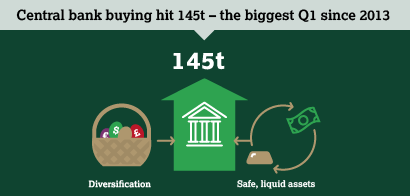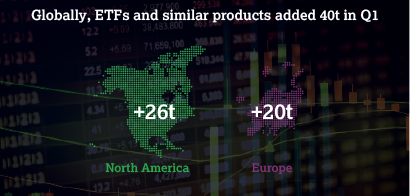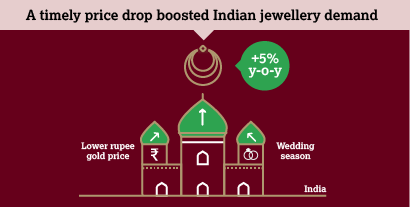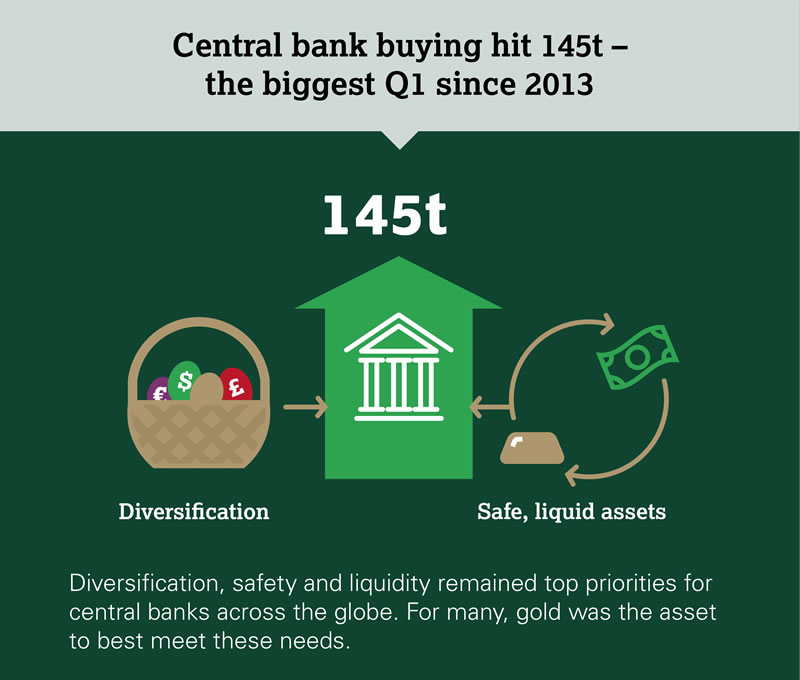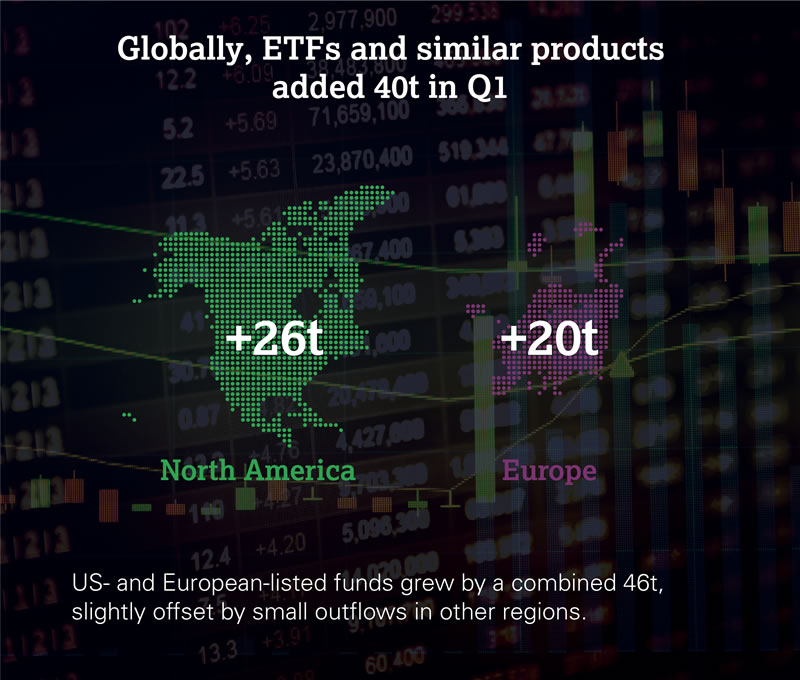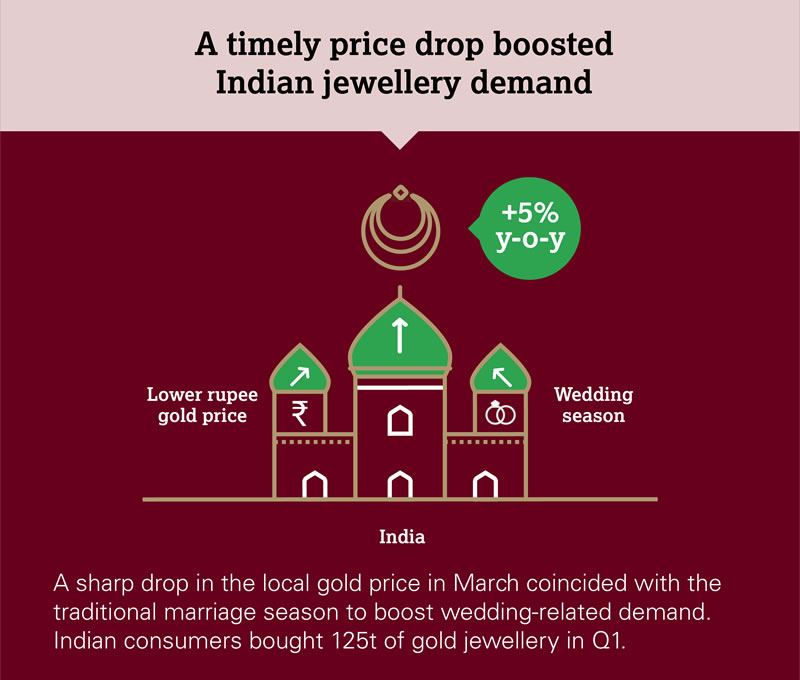Global gold demand grew to 1,053.3 tonnes (t) in Q1, up 7% y-o-y.
This compares with a relatively weak Q1 2018, when demand sank to a three-year low of just 984.2t. Central bank buying continued apace: global gold reserves grew by 145.5t. Gold-backed ETFs also saw growth: quarterly inflows into those products grew by 49% to 40.3t. Total bar and coin investment weakened a fraction to 257.8t (-1%), due to a fall in demand for gold bars; official gold coin buying grew 12% to 56.1t. Jewellery demand was a touch stronger y-o-y at 530.3t, chiefly due to improvement in India’s market. The volume of gold used in technology dipped to a two-year low of 79.3t, hit by slower economic growth. The supply of gold in Q1 was virtually unchanged, just 3t lower y-o-y at 1,150t.
